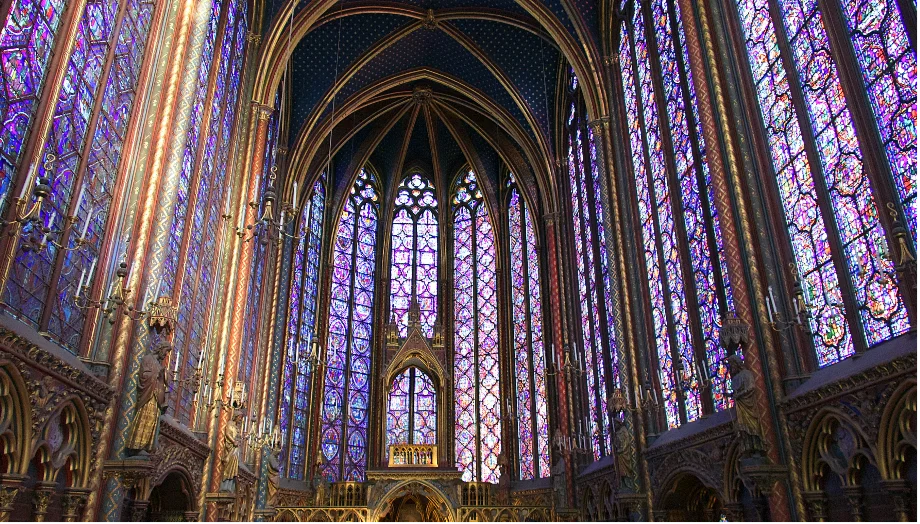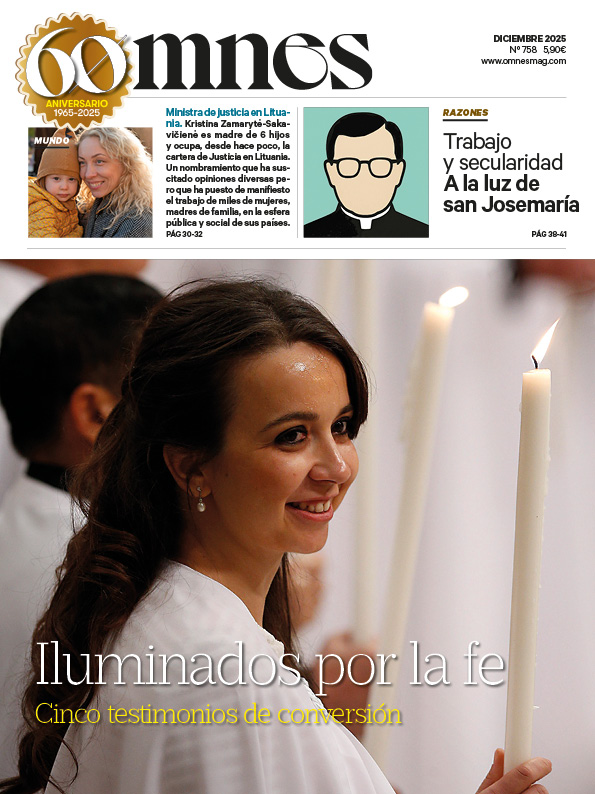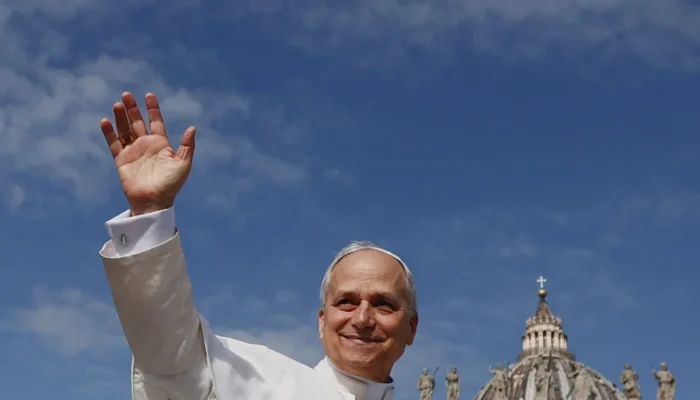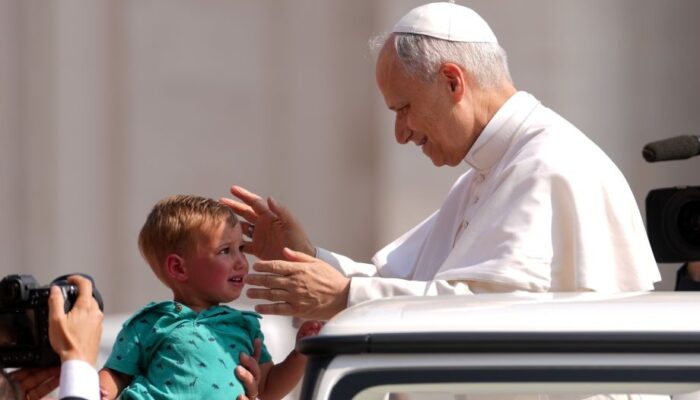God is everywhere, without being God in each of these places or in their totality. Thus, the believer, who wants to deal with this God of whom he feels himself to be a creature and whom he loves, will always be able to deal with him, wherever he is.
In truth, "where" one deals with God is in his soul, in the depths of his heart, where He dwells, being Pure Love. That is the "place" par excellence to meet Him.
Naturally, this treatment will be different according to the interior dispositions of each person, as well as the circumstances that accompany it. It is not the same to treat God in a state of grace as in sin, or to treat him in a convulsive and agitated environment -which is possible- or in a peaceful and relaxed one.
Now, it is true that the external place, the environment, helps us to encounter God and treat him with greater depth, piety, recollection and devotion. We are referring to the sacred places, where, in addition to meeting God personally, I can also do so through the liturgy, which is the celebration of the divine mysteries.
Temples dedicated to worship
These are the physical sacred places destined for common worship, for the liturgy, for the public celebration of prayer and the sacraments, the core of our Catholic faith.
They are contained in canons 1205 and following of the Code of Canon Law, which regulate the temporal goods of the Church, including their administration, acquisition, conservation and disposition. They establish the norms for the management of ecclesiastical goods, both material and immaterial, and the manner in which they are to be used for the good of the Church and its ends.
These sacred places are dedicated and blessed by the ordinary, usually the bishop, which will be recorded in the minutes; therefore, not just any place that the faithful consider to be a place of worship.
Naturally, in a sacred place, only that which is conducive to worship and piety will be admitted, prohibiting anything that is not in keeping with the sanctity of that place.
The church
It is a sacred building destined for divine worship, common prayer and the celebration of the sacraments, mainly the Eucharist.
For its construction, which will respect the liturgical norms and sacred art, the explicit written consent of the local bishop is required, who will bless it and, if necessary, place it under the patronage of the Virgin Mary or a saint.
The faithful have the right to enter the churches for the celebrations and their prayer, to meet God in the silence and recollection to be expected.
Religious or conventual communities may have their own church within their convent, called a "conventual temple", which serves as a place of worship for the religious community, as well as for the faithful who wish to attend.
Parish and parish church
It is a community of the faithful gathered around a presbyter who makes the diocesan bishop present in that place. The community celebrates worship, sacraments and prayer in the parish church, presided over by its pastor.
The pastor is basically responsible for the administration of Baptism, Confirmation in case of danger of death, the administration of Viaticum and Anointing of the Sick, assistance at marriages, the celebration of funerals, the blessing of the baptismal font at Easter time and the celebration of the Eucharist on Sundays and holy days of obligation.
Ordinarily the parish should be territorial, but where appropriate it may be personal because of the rite, language or nationality of the faithful of a territory, or for any other appropriate reason.
Cathedral or cathedral church
A cathedral is the temple where the bishop has his seat - cathedra. It is the principal church of a diocese or particular church, and from it the bishop presides at prayer and conducts worship and teaches. It may be called Mother Church or Major Church, to emphasize its unique and principal character in the diocese.
Unlike the cathedral, the "collegiate church" has a structure similar to that of the cathedral, although it is not the bishop's seat.
Basilica
In its Greco-Roman genesis the basilica was a prominent public building intended for judicial functions, as a court, but over time Christians began to use it as a temple and for liturgical purposes.
The Roman Pontiff has the prerogative of being the owner of a basilica temple, and it can be declared "major": only the Pope can officiate at its altar, and currently there are the Roman churches of St. Peter's, St. John Lateran, St. Mary Major and St. Paul Outside the Walls.
There is also the "minor" basilica - currently more than 1,500 around the world - which is designed to display on the main altar certain signs of papal dignity and union with the Holy See, and should be, like the major basilica, an example and reference for the rest of the churches in the area.
Sanctuary
It is a church or other sacred place, duly approved by the bishop of the place, to which numerous faithful go on pilgrimage for a particular reason of piety: they go to the sanctuary to venerate a particular image or relic, to gain indulgences, or because of the particular religious and historical-cultural significance of the place.
We speak of a diocesan shrine if it is approved by the local bishop, national if it is approved by the bishops' conference, or international if it is recognized as such by the Holy See.
Some sanctuaries are granted certain graces when the circumstances of the place and the good of the faithful who go on pilgrimage to them make it advisable.
Hermitage
It is a small temple, usually of small size and located on the outskirts of urban centers, in rural areas, which may have a sporadic religious use. Historically it has been linked to the figure of the hermit - hence its name - and to the practice of contemplative life.
Chapel
It is a place destined for divine worship for the benefit of one or more individuals, usually of small dimensions, which for liturgical celebrations requires the relevant episcopal authorization.
Oratory
It is a small church intended for personal and common prayer for the benefit of a community or group of faithful. Liturgical acts can be celebrated in it, and other faithful will have access to it as long as the one on whom the oratory depends gives his consent.
Cemeteries
Sacred places are also those destined for the burial of Christians: cemeteries, which contain the tombs, niches or columbaria where the ashes are deposited in case of cremation of the corpse.
In a way, they are places of encounter with God, since they are the last place inhabited by the bodily dimension of a child of God at the moment of his or her transfer to eternal life.
Cemeteries are spaces destined for the burial of Christians, who, configured with Christ by Baptism for all eternity, await the second resurrection of Christ, in which the soul will be united again to their bodies without any defect or possibility of death or decomposition.
It is convenient that the churches have cemeteries for the burial of their faithful, places already blessed by the bishop; if this is not possible, each burial place should receive such a blessing.
It is common for religious congregations or some families to have their own cemetery cemeteries.
Finally, it should be noted that ordinarily only the Pope and diocesan bishops and cardinals can be buried inside churches, as a sign of succession to the Apostles, whom they represented during their lifetime.







